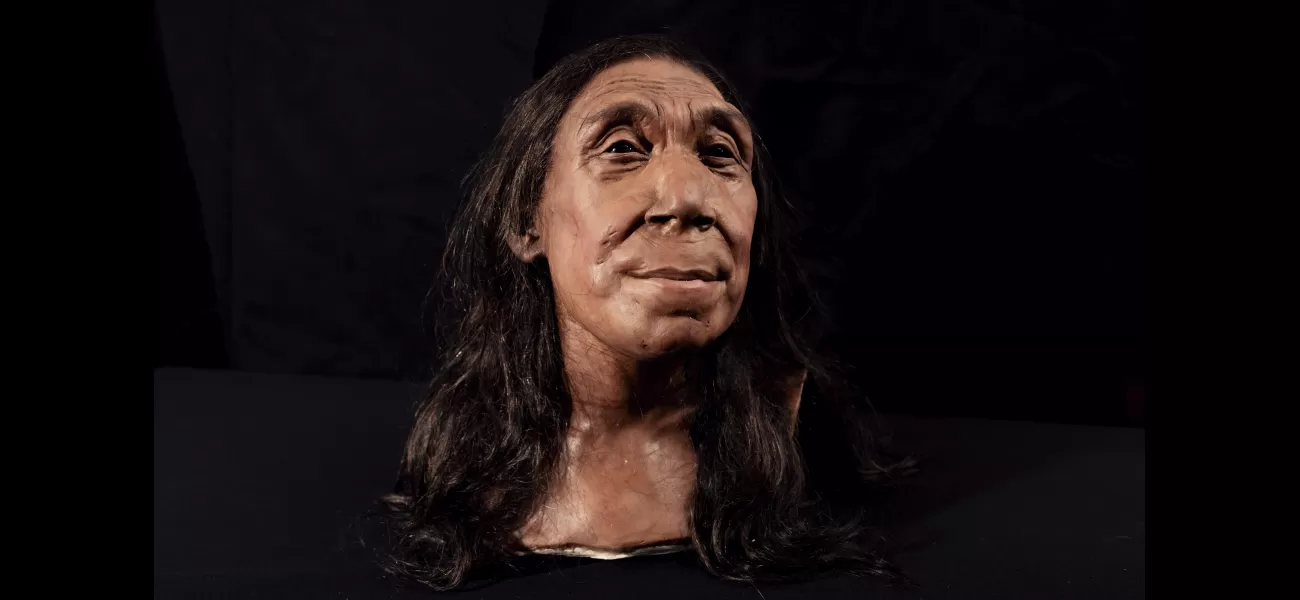Netflix documentary reveals the face of a 75,000-year-old Neanderthal woman.
She appears youthful despite her age of 75,000 years.
May 1st 2024.

Meet Shanidar Z, the name given to a 75,000-year-old female Neanderthal whose face has been painstakingly recreated by a team of archaeologists from the University of Cambridge and Liverpool John Moores University. This incredible feat is the subject of a new Netflix documentary, which follows the team as they piece together hundreds of bone fragments to bring Shanidar Z's face back to life.
The discovery of Shanidar Z's remains in Iraqi Kurdistan in 2018 sheds light on the burial practices of the Neanderthal species. The cave where she was found was a sacred place where the Neanderthals would lay their dead to rest. This cave, known as Shanidar Cave, became famous in the late 1950s when several other Neanderthal burials were unearthed in succession.
The new documentary, titled "Secrets Of The Neanderthals", takes viewers on a journey as the team returns to Shanidar Cave to continue their excavations. Dr. Emma Pomeroy, a palaeo-anthropologist from Cambridge's department of archaeology, explains that Neanderthal skulls have distinct features such as huge brow ridges and lack of a chin, which results in a more prominent nose. However, the recreated face of Shanidar Z suggests that these differences may not have been as stark in real life.
Reconstructing the skull was no easy task, as it had been crushed and flattened by sediment over time. Dr. Lucía López-Polín, the lead conservator, carefully pieced together over 200 fragments of the skull by hand, including the upper and lower jaws. Dr. Pomeroy compares the process to a high-stakes 3D jigsaw puzzle, with each fragment taking up to two weeks to process.
The team's site analysis suggests that Shanidar Z was laid to rest in a gully formed by running water, which had been further hollowed out by hand to accommodate her body. Her flattened skull suggests she may have been a victim of rockfall shortly after her death. The position of her body also offers insight into the Neanderthals' burial rituals, with her left hand curled under her head and a rock behind it, possibly acting as a cushion.
Professor Graeme Barker, who leads the excavations at Shanidar Cave, explains that the site provides a unique opportunity to explore one of the biggest mysteries of human evolution: why did Neanderthals disappear from the stage around the same time as Homo sapiens spread to their territories? The Secrets Of The Neanderthals documentary, set to launch on Netflix worldwide on May 2nd, will undoubtedly shed light on this question and offer a fascinating glimpse into the lives of our ancient relatives.
The discovery of Shanidar Z's remains in Iraqi Kurdistan in 2018 sheds light on the burial practices of the Neanderthal species. The cave where she was found was a sacred place where the Neanderthals would lay their dead to rest. This cave, known as Shanidar Cave, became famous in the late 1950s when several other Neanderthal burials were unearthed in succession.
The new documentary, titled "Secrets Of The Neanderthals", takes viewers on a journey as the team returns to Shanidar Cave to continue their excavations. Dr. Emma Pomeroy, a palaeo-anthropologist from Cambridge's department of archaeology, explains that Neanderthal skulls have distinct features such as huge brow ridges and lack of a chin, which results in a more prominent nose. However, the recreated face of Shanidar Z suggests that these differences may not have been as stark in real life.
Reconstructing the skull was no easy task, as it had been crushed and flattened by sediment over time. Dr. Lucía López-Polín, the lead conservator, carefully pieced together over 200 fragments of the skull by hand, including the upper and lower jaws. Dr. Pomeroy compares the process to a high-stakes 3D jigsaw puzzle, with each fragment taking up to two weeks to process.
The team's site analysis suggests that Shanidar Z was laid to rest in a gully formed by running water, which had been further hollowed out by hand to accommodate her body. Her flattened skull suggests she may have been a victim of rockfall shortly after her death. The position of her body also offers insight into the Neanderthals' burial rituals, with her left hand curled under her head and a rock behind it, possibly acting as a cushion.
Professor Graeme Barker, who leads the excavations at Shanidar Cave, explains that the site provides a unique opportunity to explore one of the biggest mysteries of human evolution: why did Neanderthals disappear from the stage around the same time as Homo sapiens spread to their territories? The Secrets Of The Neanderthals documentary, set to launch on Netflix worldwide on May 2nd, will undoubtedly shed light on this question and offer a fascinating glimpse into the lives of our ancient relatives.
[This article has been trending online recently and has been generated with AI. Your feed is customized.]
[Generative AI is experimental.]
0
0
Submit Comment





